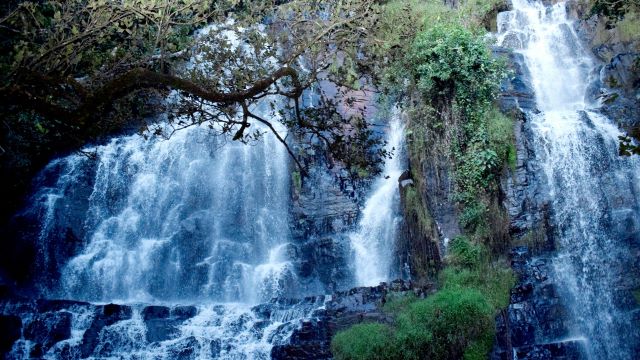By Helen Struewn
In the heart of East Africa, Burundi sits tucked between its more prominent neighbors, often overlooked on the maps of travelers chasing safaris or mountain gorillas. Yet within this compact country, where highland mists give way to tangled wetlands, a rich web of biodiversity quietly endures. The nation’s varied landscapes—rainforests, rivers, and lakeshores—form a living mosaic that conservationists and communities are working, against the odds, to preserve.
Kibira National Park: The Mountain Forest’s Breath
Stretching along the Congo–Nile Divide, Kibira National Park is a montane rainforest whose canopy hums with life. Here, the morning light filters through dense green to reveal flashes of motion: chimpanzees moving in purposeful bursts, colobus monkeys arching between branches. The air is thick with the calls of birds found nowhere else, their voices carrying through a forest that functions as both sanctuary and lifeline.
The park is more than a refuge for wildlife—it is a critical part of Burundi’s water cycle, feeding rivers that sustain communities downstream. Yet even as conservation groups work to safeguard its ecological health, the pressures mount. Poaching, small-scale logging, and encroaching farmland threaten to fragment this delicate ecosystem, and with it, the species that depend on its continuity.
Rusizi National Park: Wetlands at the Edge of the Lake
Along Burundi’s western flank lies Rusizi National Park, a wetland expanse where Lake Tanganyika’s shoreline bleeds into papyrus marshes and slow-moving channels. Hippos surface in the shallows; crocodiles bask along the mud banks. Sitatunga—an elusive swamp antelope—moves almost soundlessly through the reeds.
The park’s lakeside and riverine habitats are a draw for birdwatchers, with sightings ranging from African fish eagles to rare migratory species. Ecologically, Rusizi serves as a crucial buffer for the lake’s health, linking terrestrial and aquatic systems in ways that remain only partially understood. But the park is also a contested space, as human demand for farmland and fishing waters runs against the imperatives of conservation.
The Emerging Ethos
In recent years, Burundi has begun to position its protected areas as engines of eco-tourism, drawing modest but growing numbers of international visitors. Revenue from these ventures has funded anti-poaching patrols, habitat restoration projects, and training programs for local guides. Grassroots efforts, particularly in buffer communities, have encouraged a sense of stewardship among residents—though sustaining that engagement requires ongoing resources and trust.
The country’s natural wealth is still vulnerable. Conservation here remains a balancing act between economic need and ecological necessity, shaped by both local realities and global environmental shifts. For those who know where to look, however, Burundi’s landscapes tell a quiet story of endurance—of a small nation safeguarding its place in the natural order, one forest and one wetland at a time.
Sources:
- Republic of Burundi, Ministry of Environment, Agriculture and Livestock. National Biodiversity Strategy and Action Plan, 2021.
- BirdLife International. “Important Bird Areas: Kibira National Park, Burundi.” Accessed July 2025.
- UNEP-WCMC. Protected Area Profile for Burundi from the World Database of Protected Areas, 2024.
- WWF East Africa. “Conservation in the Lake Tanganyika Basin.” 2023.


